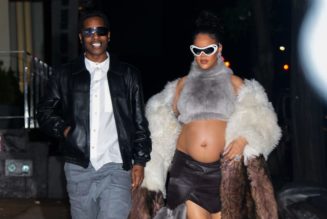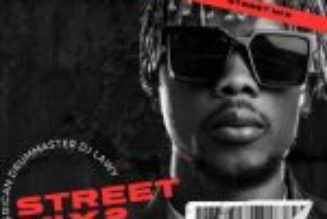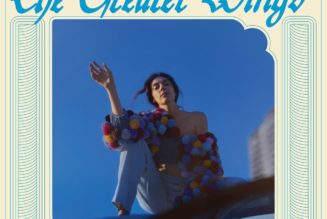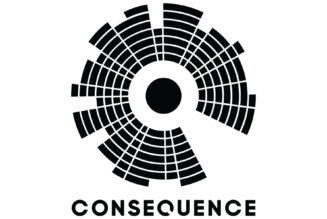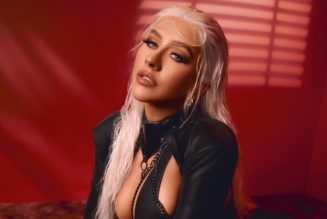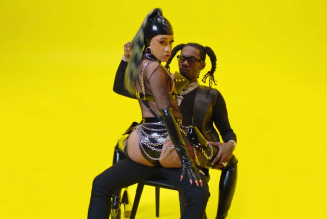By Yasmine Shemesh
An eponymous album marks a major moment in an artist’s career. For women, owning one’s work, body, and artistry can be especially powerful, even political. Throughout Women’s History Month, MTV News is highlighting some of these iconic statements from some of the biggest artists on the globe. This is Self-Titled.
In 2000, while filming scenes in the title role for Queen of the Damned in Australia, Aaliyah finished recording her third album. It had been in the works for a couple years — she reportedly completed most of it in New York before making her on-screen debut in that year’s Romeo Must Die and releasing “Try Again” as the soundtrack’s lead single. But despite the time gap, Aaliyah’s vision for her eponymous album remained clear: to expand the boundaries of her sound.
“She told me specifically what kind of records she wanted,” singer-songwriter Tank, who wrote “I Can Be” and “What If” for Aaliyah, told the music blog YouKnowIGotSoul in 2011. “She kind of wanted a little dangerous, a little sexy, that type of thing.”
Tank, with other co-writers and producers for the album including Static Major, Bud’da, J.Dub, Key Beats, and Playa, hunkered down in Melbourne’s Sing Sing Studios for about a month. Aaliyah, who filmed her scenes as the evil vampire Queen Akasha during the day, joined them in the evenings. When the album was released on July 7, 2001, it debuted at No. 2 on the Billboard 200. It received rave reviews: Vibe called it “the best soul album of the young millennium,” while Spin described Aaliyah as a “musicologist” who creates “meaning outside the lyrics.”
Aaliyah was a continuation of the remarkable way the artist surpassed herself with each release. While 1994’s Age Ain’t Nothing but a Number bridged her precocious mystique with new jack swing, 1996’s One in a Million highlighted Aaliyah’s hushed tones with thumping, stuttering rhythms in collaboration with creative soul mates Missy Elliott and Timbaland. Aaliyah took all that and fused it into a sophisticated soundscape at the bleeding edge of sonic innovation.
Aaliyah’s forward-thinking musical outlook was representative of the enterprising artist she was — and the icon she so quickly became. As she developed her wide-ranging talent, her magnetic appeal flooded into other arenas: film, where she was cultivating a promising career, and fashion, where her laid-back, sensual style made her a muse for designers like Tommy Hilfiger. He even launched a whole campaign around her wearing baggy jeans with an exposed waistband and bandeau top, the success of which inspired the brand’s women’s line. Importantly, Aaliyah was an inspiration for kids coming of age everywhere who saw glimpses of themselves in her.
Considering the ingenuity of Aaliyah, it’s no wonder. The production was mind-bending, characterized by a cybernated sonic freakiness, and the way Aaliyah pulled humanity out of digitized ones and zeroes is a master class in nuance. “We were trying to do as much as we could and try to put an album together for her to be able to hear and see what she felt,” Bud’da recalled.
Aaliyah’s honeyed falsetto was more robust and urgent than ever as she explored relationship dynamics and intimacy in Timbaland’s twitchy syncopation (“We Need a Resolution,” “More Than a Woman”), desire in shimmering synthesizers (“Rock the Boat”), liberation in swelling staccato (“I Refuse”), and jealousy in glitchy, industrial chaos (“What If”).
“There are a lot of great flavors on the album,” Aaliyah said in an interview with the Orlando Sentinel. “It’s older, it’s edgy, it’s raw, yet it’s a little bit of fun. I want to tell people where I am as a person in my life today.”
When Aaliyah was released, nothing sounded quite like it. TLC and Destiny’s Child had played with staticky accents on Fanmail and The Writing’s on the Wall, respectively — a trend that Aaliyah herself spurred with One in a Million — but Aaliyah was avant-garde. Weirder, in an electrifying kind of way; as Vibe described: “damn near post-R&B.”
It’s still impossible to fathom what happened next. Just a month after Aaliyah was released, returning home from the Bahamas where she shot the music video for “Rock the Boat,” Aaliyah and eight other passengers lost their lives in a plane crash. She was only 22. The indelible mark she made on contemporary R&B and pop culture, at large, in such a short period of time had been so immediate: Aaliyah stretched the bounds of what R&B could sound like in a way that redefined the genre, while helping inform sonic trends of the early 2000s. Twenty years after the release of the album as well as her tragic death, the force of that impact still reverberates.
It’s not difficult to hear the direct influence Aaliyah made on the generation that followed her. Artists like Kehlani, Tinashe, Ciara, and Rihanna have taken audible cues from Aaliyah’s soft vocal phrasing and left-of-center song qualities. “We owe our chill vibe to her,” Tinashe told Billboard. “People were used to artists belting things out. She brought a new vocal styling that wasn’t represented in R&B. Not everything has to be so uptempo.” Drake is one of Aaliyah’s loudest devotees, sampling her music (“Unforgettable”), referencing her in lyrics (“BedRock”), and rapping to her previously unreleased tracks (“Enough Said”). FKA Twigs channeled Aaliyah outright in “Two Weeks,” pairing her sweet tone against anxious percussion and then paying music video homage to Queen of the Damned in full Queen Akasha regalia.
“The new generation pulls inspiration from Aaliyah, despite not growing up with her, because she was authentic,” Missy Elliott said in 2014. “Her music couldn’t be placed in a category.”
 KMazur/WireImage
KMazur/WireImageIndeed, perhaps the best indicator of Aaliyah’s influence is how it has extended into more unexpected musical territories like dubstep — which, bearing in mind the experimental nature of her work, isn’t all that surprising. On “In McDonalds,” electronic maestro Burial pitch-shifted Aaliyah’s “I Refuse” into a whispering siren that cut through enigmatic sparsity. James Blake sampled “Are You That Somebody?” to form the foundation of his airy post-dubstep anthem “CMYK.”
Such a sweeping compass is one reason why Aaliyah’s lack of visibility on streaming platforms feels so glaring. The majority of her catalog isn’t available on any service. Aaliyah and One in a Million can be found on YouTube; there are bootlegs floating around the internet and random songs on Spotify featured on obscure compilations like R&B Divas and Girls of Hip Hop, Vol. 1. The only Aaliyah album currently available to stream is her first, Age Ain’t Nothing but a Number, which was written and produced by R. Kelly; in 2019, Kelly faced charges of bribing an Illinois official in order to procure a fake ID for the then-15-year-old Aaliyah in order to marry her. He is currently imprisoned awaiting a trail on charges of racketeering and child pornography.
Journalist Stephen Witt traces the streaming obstacle back to Aaliyah’s uncle, Barry Hankerson, who owns most of her discography through his now-defunct Blackground Records imprint and who seems unwilling to release it. There are also issues with the fact that her three albums were each distributed through different labels.
But with streaming as today’s primary avenue of musical consumption, if Aaliyah’s music isn’t accessible in our all-but-entirely digital era, younger generations who didn’t grow up with it won’t have the chance to truly discover it — no matter who cites Aaliyah as an influence or takes her fashion notes or celebrates the impact she made. As Witt writes, this runs a dangerous risk that Aaliyah will be forgotten. “Nostalgia is cyclical,” he adds, and “if Aaliyah’s catalog isn’t on the right platforms, her music could functionally cease to exist.”
Last summer, it seemed like things started moving along, albeit slowly. Aaliyah’s estate gave a statement saying communication had begun regarding the status of her music and its streaming availability. This January, another statement thanked fans for their patience and support: “We must acknowledge that these matters are not within our control and, unfortunately, take time.”
For those who loved her or still have yet to discover her, hopefully we’re a step closer to having Aaliyah’s music at our fingertips. In the meantime, her voice can still be heard in the musical landscape she helped revolutionize, as well as through the multidimensional trajectory of her legacy — to be sure, a distinction she wanted all along.
“I want people to see me as an entertainer,” Aaliyah considered in a 2001 interview with MTV News. “Someone who can do it all. I want people to look at me as a full-on entertainer.” She paused, then smiled. “And a good person.”


